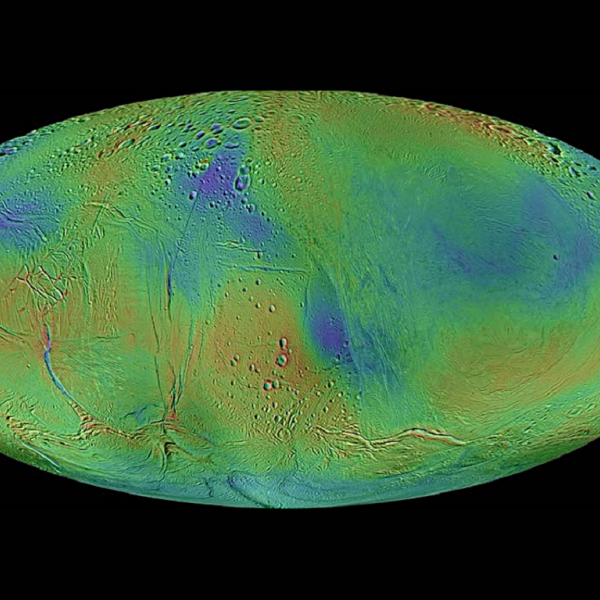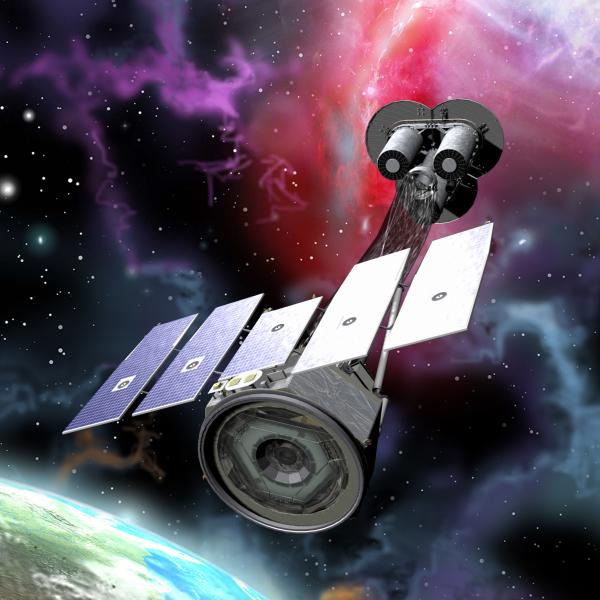Professor McKinnon’s research focuses on the icy satellites of the outer solar system and the physics of impact cratering. He and his students and colleagues concentrate on the origin, structure, evolution, and bombardment history of outer planet satellites and Pluto.
The last forty years of planetary exploration can be characterized by both the unveiling of the outer solar system, and the growing realization of the importance of impacts in solar system evolution (among other paradigm shifts!). Dedicated to exploring this frontier, Professor McKinnon believes this includes understanding the relative importance of large impacts, orbital dynamics, and internal processes for tectonics and other surface modifications, the origin and evolution of impactor populations, and the cratering mechanics in ice and other targets.
McKinnon is interested in extending our geological and geophysical perspectives to worlds where water ice is a major, if not dominant, constituent. These worlds include the satellite systems of Jupiter, Saturn, and Uranus, which resemble miniature solar systems in part, and those of Neptune and Pluto, which do not. Galileo image and other data has transformed our view of the Jupiter's major moons, particularly Io, Europa, Ganymede, and Callisto. Ganymede and Callisto are especially interesting, as they are very similar in bulk properties, yet startlingly different in appearance. Work has focused on their internal structures, convection in their icy mantles, viscous relaxation of impact crater topography, and on Ganymede, topographic and morphologic evidence for water-rich volcanism. Other work has concerned the links between the extreme volcanism and towering mountains on Io, the solar system's most active solid body, and in the Saturn system, constraints on the internal structure of diminutive Enceladus, evidence for a global subsurface ocean on that icy satellite, and geological evidence for past episodes of extreme tidal heating. All of the latter support the hypothesis that Enceladus is presently habitable.
Of all of the Galilean satellites, though, Europa, with its complexly tectonically and volcanically deformed icy surface and probable subsurface water ocean, has clearly emerged as the star. Active research involves linking the tectonic and other patterns seen on the surface to sources of stress, the conditions necessary for subsolidus convection within both the surface ice shell and the interior silicate mantle, and the geophysical and geochemical consequences thereof. The latter are of deep interest because of the theoretical possibility of a subsurface biosphere, hosted in hydrothermal systems on Europa's ocean floor. McKinnon serves on the RIME sounding radar for the European Space Agency’s Jupiter Icy Moon Explorer (or JUICE!), and is also a co-investigator for the REASON radar, the MASPEX mass spectrometer, and the Gravity/Radio Science teams for NASA’s upcoming Europa Clipper mission. Both of these missions are in build and will be launched in the next few years, so the opportunities for involvement and scientific discovery are great!
Understanding the ice-rock bodies of the deep outer solar system is especially challenging. Pluto and its moon Charon are important because they are survivors representative of the protoplanets that accreted to form Uranus and Neptune. Triton, Neptune's major satellite, may have been captured from solar orbit, and thus be similar to Pluto. Work in this area concerns the origin and interrelationships of these bodies and the ice-rock bodies of the Kuiper Belt, within which Pluto is found and from which Triton probably escaped. McKinnon has served for many years as the Deputy Lead for Geology & Geophysics for NASA’s New Horizons mission to the Pluto system and the Kuiper belt. The data from these flybys are on the ground, but the data analysis and associated modeling has only begun. Already, however, the data from Pluto, its moons, and the small Kuiper belt object Arrokoth, have revolutionized our understanding of planetary accretion (formation) and the possibilities for geological activity on distant dwarf planets.
The reconnaissance of the solar system is now complete, if one counts Pluto as one of the classical planets. The cratering records of the solid planets and satellites contain the most direct evidence of the accretion of the solar system, a process that is not absolutely complete as the 1994 Shoemaker-Levy 9 impacts with Jupiter attest. Much remains to be learned, especially as concerns the impact process itself and effects on target bodies. The Earth has not been spared from such collisions, and while infrequent today, the effects can be catastrophic. Past work has dealt with atmospheric effects on cratering, and the formation of multiring craters on Venus, along with the production and characteristics of so-called secondary craters on the Moon and icy satellites. More recent work has looked at how big impacts affect the rotation rates and shapes of major asteroids such as Vesta and Ceres as well as the most distant object ever examined close-up, Arrokoth. The cratering record in the Pluto system itself has put profound constraints on the original planetesimal population far from the Sun.
Planetary science suffers from no shortage of data to study and interpret, and the next ten to twenty years should see even greater infusions. Planetary science remains vital and exciting, a field of central importance for our species, and by extension, all other species on our planet as well.






